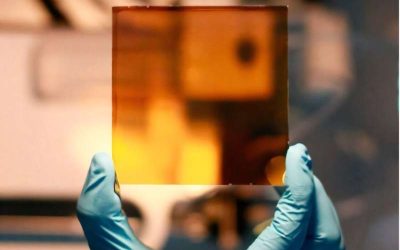To further reduce the size of electronic devices, while also improving their performance and energy efficiency, electronics engineers have been trying to identify alternative materials that outperform silicon and other conventional semiconductors. Two-dimensional (2D)...
Hi Tech & Innovation
An active optical intensity interferometry scheme enables synthetic aperture imaging from over a kilometer away
Intensity interferometry is a promising technique that enables the precise measurement of spatial properties (i.e., distances, shapes and light properties) by probing fluctuations in the intensity (i.e., brightness) of light, as opposed to the exact timing and phase...
Scalable method creates self-healing, stretchable transistors and circuits
Recent technological advances have enabled the development of a wide range of increasingly sophisticated wearable and implantable devices, which can be used to monitor physiological signals or intervene with high precision in therapeutically targeted regions of the...
Whole-body teleoperation system allows robots to perform coordinated tasks with human-like dexterity
The ability to remotely control robots in real-time, also known as teleoperation, could be useful for a broad range of real-world applications. In recent years, some engineers have been trying to develop teleoperation systems that allow users to guide the actions of...
Ink engineering approach boosts efficiency and cuts cost of quantum dot-based photovoltaics
Colloidal quantum dots (CQDs) are tiny semiconductor particles that are just a few nanometers in size, which are synthesized in a liquid solution (i.e., colloid). These single-crystal particles, created by breaking down bulk materials via chemical and physical...
Mimosa seed bio-piezoelectric device functions as self-charging supercapacitor with high efficiency
Most energy generators currently employed within the electronics industry are based on inorganic piezoelectric materials that are not bio-compatible and contribute to the pollution of the environment on Earth. In recent years, some electronics researchers and chemical...
New approach reliably integrates 2D semiconductors with dielectrics
Two-dimensional (2D) semiconductor materials could enable the development of smaller yet highly performing electronic components, thus contributing to the advancement of a variety of devices. While significant strides have been made in the synthesis of 2D...
Artificial nerve with organic transistor design shows promise for brain-machine interfaces
Heat-based stabilization of a conductive polymer simplifies bioelectronics fabrication
Recent advances in the field of materials science have opened new possibilities for the fabrication of bioelectronics, devices designed to be worn or implanted in the human body. Bioelectronics can help to track or support the function of organs, tissues and cells,...
A new on-chip microcomb to synchronize signals in optoelectronics
Optoelectronics are promising devices that combine optical components, which operate leveraging light, with electronics, which leverage electrical current. Optoelectronic systems could transmit data faster than conventional electronics, thus opening new possibilities...










